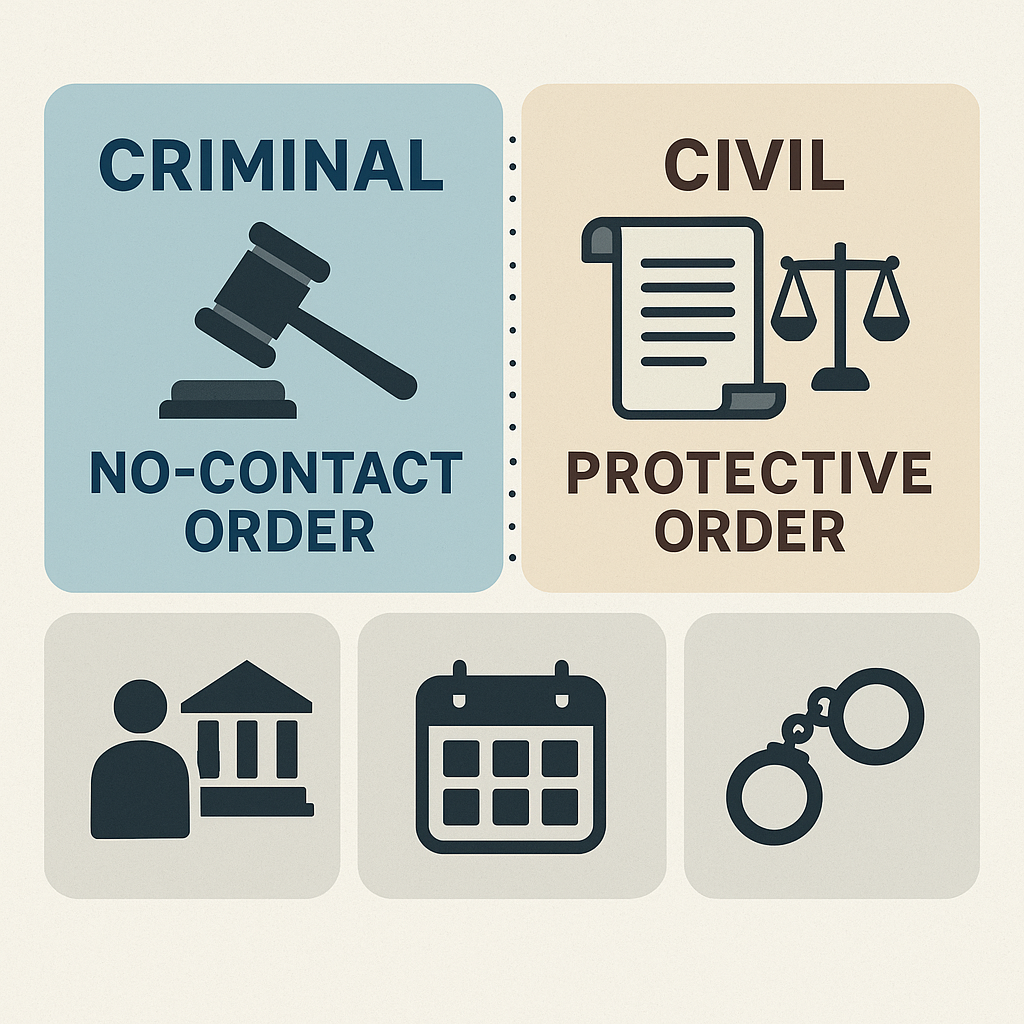Criminal No-Contact vs Civil Protective Orders in Utah
Side by side comparison of who issues them, how long they last, and what violations mean
These orders may look similar, but they come from different courts, use different standards, and serve different purposes. This guide shows who issues each type, how they are enforced, and how they interact with family cases so you can see where Utah courts draw the line between criminal and civil protection.
Who Requests and Which Court Issues the Order
Criminal no-contact order. Issued by a criminal court judge in an active criminal case, often right after an arrest for domestic violence, assault, or a similar charge. It is typically part of the defendant’s release conditions.
Civil protective order. Filed by a petitioner in civil district court seeking protection, even if no criminal charges exist. It starts with a petition and can be granted on a temporary basis before a full hearing.
Burden of Proof and Duration
Criminal no-contact order. The court must find probable cause for the underlying offense. The order usually lasts until the criminal case ends, and a judge may extend or modify it during probation.
Civil protective order. The petitioner must show that abuse, harassment, or threats occurred or are likely to occur. After a hearing, the court can keep the order in place for years or even permanently unless later modified.
Violations and Penalties
Violating either order is a crime in Utah. A criminal no-contact violation can lead to immediate arrest and new charges, sometimes misdemeanors and sometimes felonies depending on the facts.
Civil protective order violations are enforced through police reports and separate criminal prosecution. Criminal no-contact violations are typically handled within the same criminal case that created the no-contact condition.
Overlap with Divorce or Custody Cases
When there are children or ongoing custody matters, orders can collide. A criminal no-contact order may restrict communication even if a family court parenting plan exists. Judges often coordinate to avoid conflicting directives.
A civil protective order can include child related terms such as temporary custody or supervised visitation. These remain in effect until a family court order replaces or modifies them.
Modifying or Terminating an Order
Criminal no-contact order. Only the criminal court can lift or change it, usually after a motion by the defense or the prosecutor.
Civil protective order. Either party may move to modify or dismiss. The court weighs ongoing safety concerns and any new evidence before changing terms.
Practical Safety Planning
- Document every incident and keep copies of all orders accessible.
- Share relevant restrictions with workplaces, schools, or landlords when appropriate.
- Connect with local advocates like the Utah Domestic Violence Coalition for planning and support.
Video & Social Learning Hub
YouTube: Protective Orders in Utah
Instagram: Utah Stories and Case Examples
Not Sure Which Order Fits Your Situation
Knowing whether your facts call for a criminal no-contact order or a civil protective order can change your next steps. If orders overlap or conflict, a Utah attorney can help you sort out which court controls and how to stay compliant.
Talk to a Utah AttorneyThis guide is for education only. For more plain-English legal resources, follow Utah Law Explained, visit our About Us page, or connect with trusted counsel like Gibb Law Firm.
